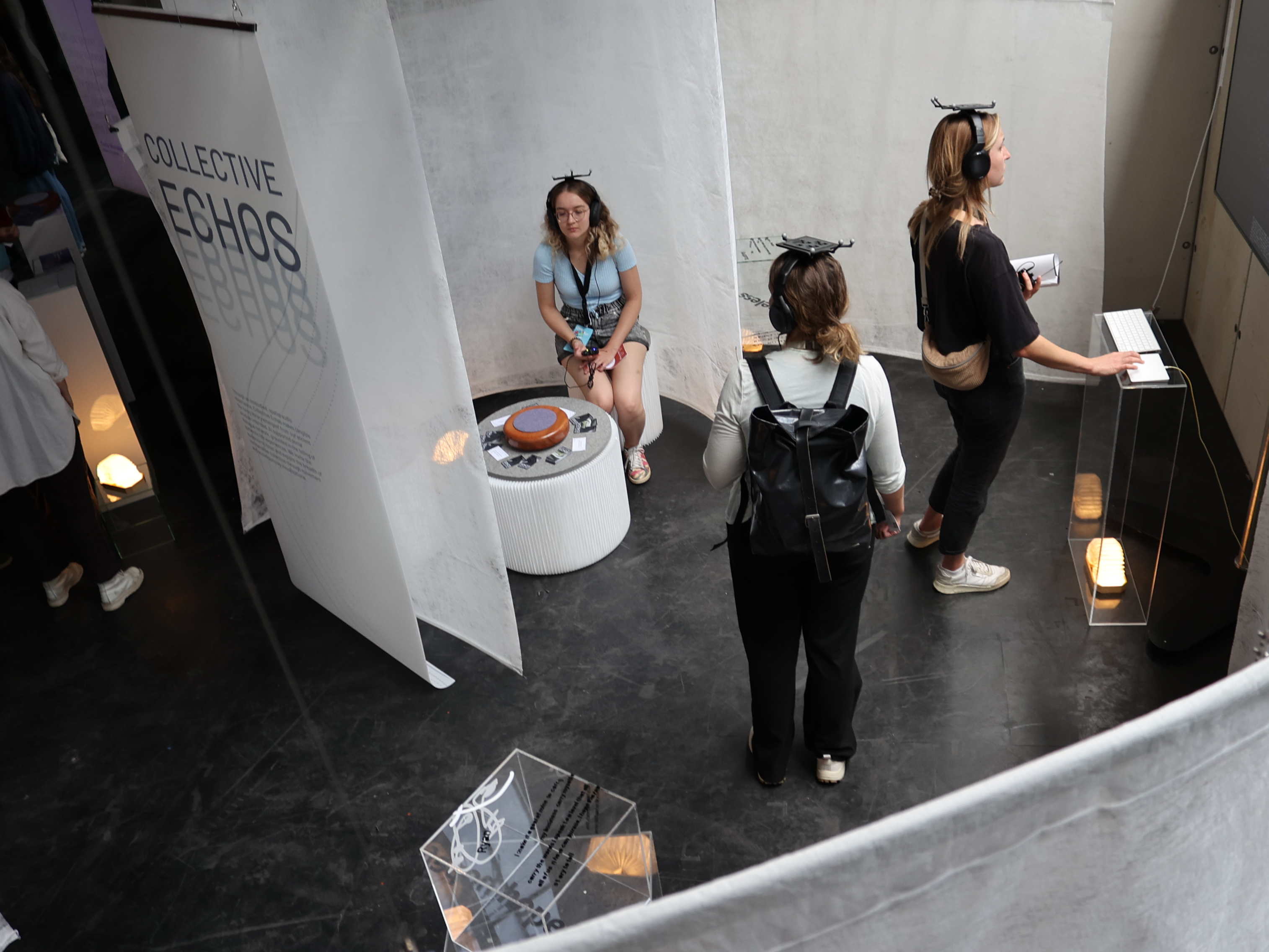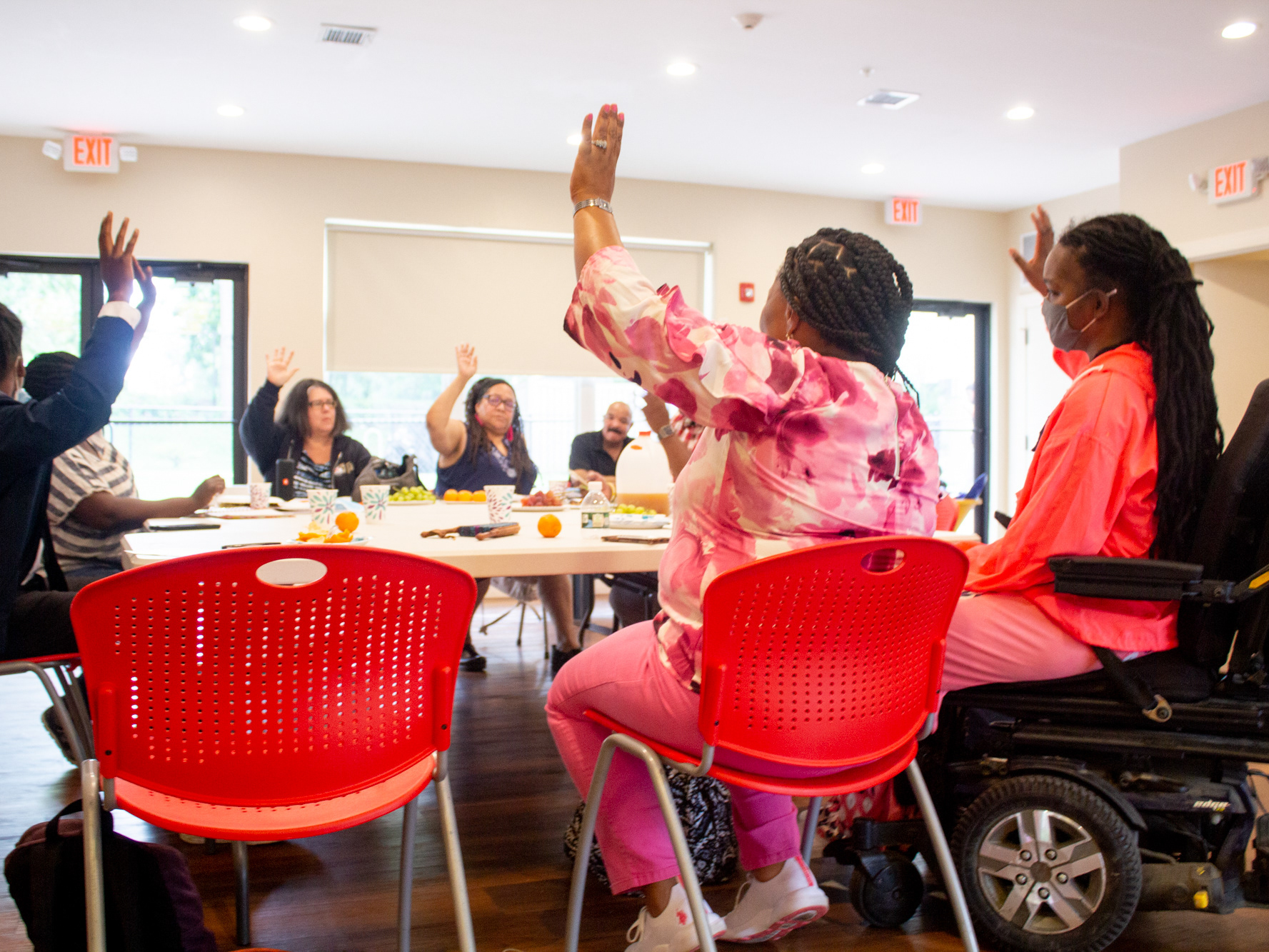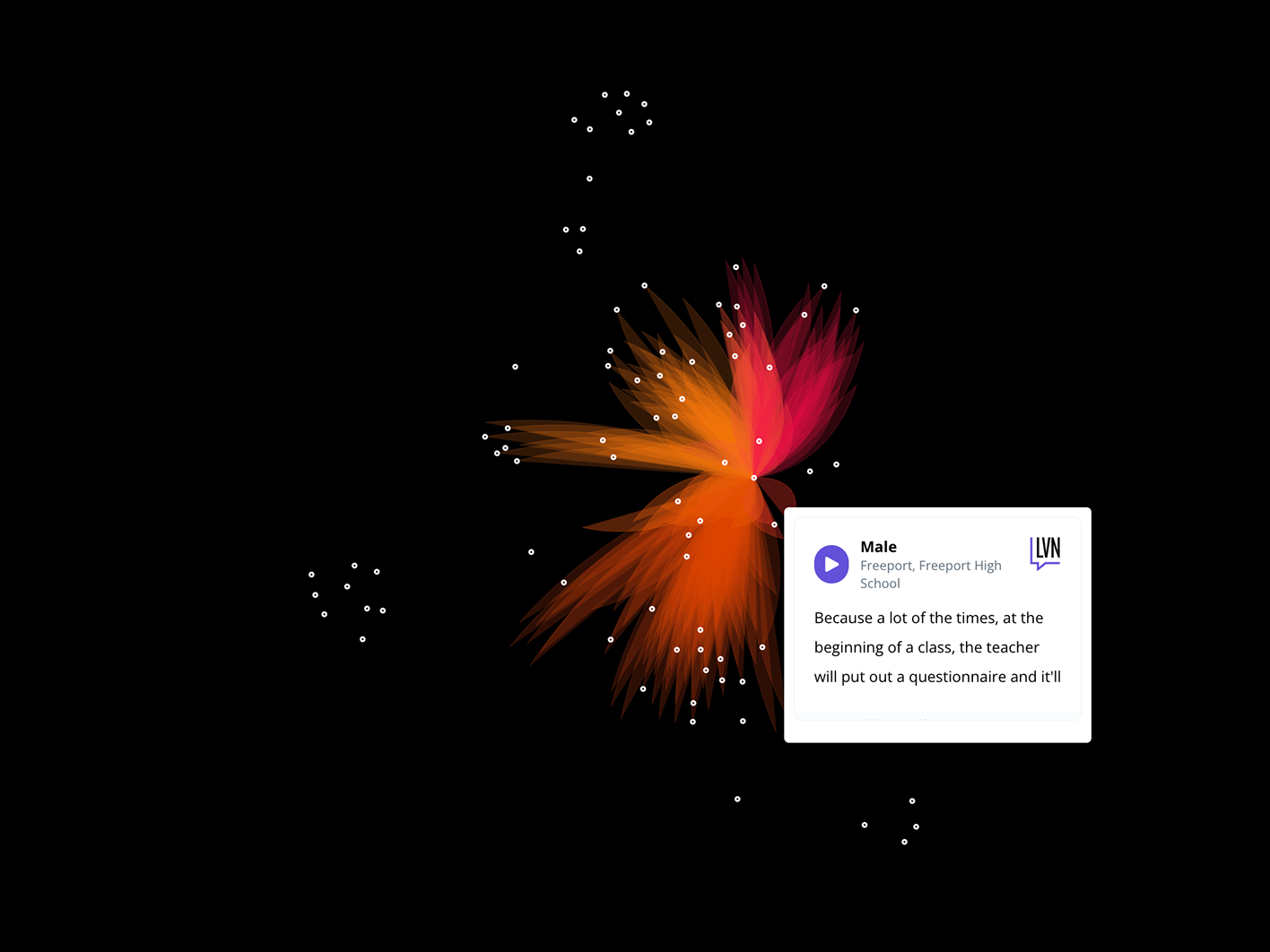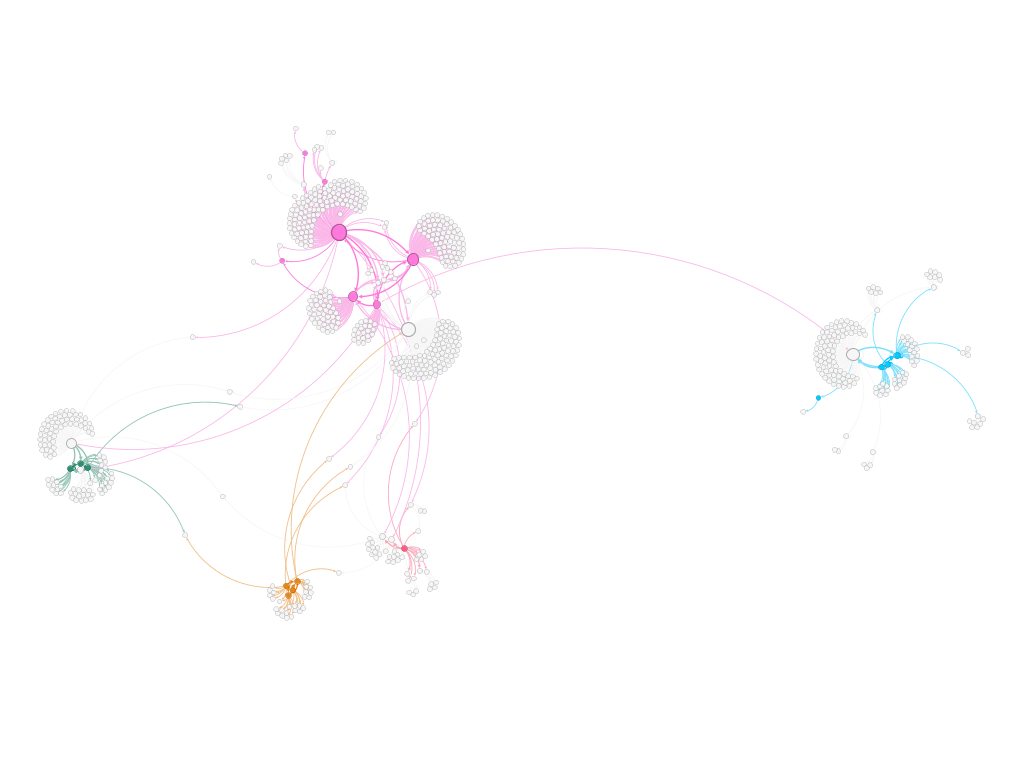For this project, I ethnographically studied facilitation practices and developed an environment informed by their needs. Specifically, I pulled from Circle practice, a method often used in Restorative and Transformative Justice spaces. In Circle, sitting in a circle, setting a calming inviting tone, using a talking piece, and being present and deeply listening to one another are key.
With this insight, I developed an environment, Keeper, to help facilitate synchronous Circle conversations.
In Keeper, each avatar is an abstract glowing orb that pulses with light when the user each user is present and in the Keeper environment.
Further, different signals show when a user is speaking, feeling harm or pain, or agreeing with another user's statements.
We implemented structured turn-taking mechanisms, as well, such as a talking piece, queue to eventually have the talking piece, and a raise hand feature.
We developed the environment to feel physical and spatial to improve social presence and overall connection between users...
...and designed the talking piece to have a similar physical experience with a drag-drop for passing and taking the piece. In Circle, it is essential that one chooses when to end their turn and give speaking time to another, and the drag-drop attempts to enable that act.
Exploring other potentials of the digital medium, we implemented a metric system as well. For example, users can show abstract signals of emotion through their orb's color choice.
Further, "water" will fill each orb with the amount of time spoken compared to others in the Circle.
If a person hasn't spoken for a few rounds of passing the talking stick, their orb will become more transparent as well as they take up less physical space in the conversation. Other signals that show active listening like nodding will also make an orb more opaque, honoring multiple forms of conversation participation.
When speaking, a user's orb will glow white, unless the action is a dominating or interrupting one, and the orb will glow red.
The water of that orb also can reflect how a user has spent their speaking time, be it in their own turn or during another's turn (interruption, which will turn one's water red).
Finally, a network will form between users that shows their relationship to one another. Have they been building off of one another throughout the conversation? A purple relationship arc will form between them. Has a user shown consistent dominating behaviors towards another? A red relationship arc will start to form. If that same dominating user then shows more positive tendencies, the arc will fade to purple. The thickness of the arc is a metric for amount of interaction, and the direction is show through the point of each arc.
Outside of active signals on the part of the user, we also wanted to explore how we might be able to "remember" the conversation. For this reason, we developed conversation "maps" that show the user's and their participation over time.
1) The user's in the conversation; 2) Terry speaking in turn, the longer he speaks the longer the purple bar will be that drops into the map; 3) Todd interrupted; 4) Karla raised her hand and was called on; 5) Todd send a message to the facilitator (only in facilitator view); 6) Charles signaled harm; 7) Todd nodded; 9) At the beginning, everyone went in sequenced turns; 10) The overall participation metrics for each user, as reflected in the main screen.
In practice, facilitators have their own view where they are able to turn on and off any features they would like, and are able to privately and publicly message participants.
All together, and example conversation with many participants trying to push the tool to its limits creates an exciting, bold, and playful but intimate experience.
After tool development, we ran a series of play test, had qualitative expert interviews, ran qualitative studies, and developed and deployed an RCT. We found that conversations held on Keeper improve feelings of calmness and welcome, ease of conversation, and social presence for participants involved, and that experts found value in the platform. Publication in CSCW and CHI.







